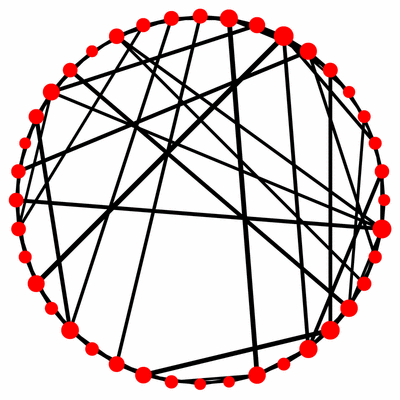 There has been considerable activity in recent years in both understanding
existing gene regulatory networks found in nature and designing new
synthetic gene regulatory networks that can provide novel functions
within living cells. The Repressilator system is one such example of
a synthetic regulatory circuit. Here, papers describing other small
synthetic circuits and/or naturally occuring network motifs are described.
There has been considerable activity in recent years in both understanding
existing gene regulatory networks found in nature and designing new
synthetic gene regulatory networks that can provide novel functions
within living cells. The Repressilator system is one such example of
a synthetic regulatory circuit. Here, papers describing other small
synthetic circuits and/or naturally occuring network motifs are described.
This set of modules does not contain step-by-step hints on how to build simulation and analysis tools, but rather points to several interesting papers analyzing network structure, growth and evolution in a number of settings. These projects are more open-ended, and other papers of interests may also be suggested.
Students will probably find it useful to have first completed the Repressilator exercise, and to use the software framework there as a basis for studying the models described below.
Papers and Projects
J. Hasty, M. Dolnik, V. Rottschafer, and J.J. Collins, "Synthetic Gene Network for Entraining and Amplifying Cellular Oscillations" , Phys. Rev. Lett. 88, 148101 (2002).
Like with the Repressilator, this paper implements a synthetic gene regulatory oscillator, but with a different topology.
T.S. Gardner, C.R. Cantor, and J.J. Collins, "Construction of a genetic toggle switch in Escherichia coli", Nature 403, 339-342 (2000).
Another important circuit element is described here, namely a gene regulatory toggle switch based on bistability. Subsequent papers by this group and others have used this switch design to engineer cellular behaviors in response to environmental signals.
S. Mangan and U. Alon, "Structure and function of the feed-forward loop network motif", PNAS, 100(21), 11980-11985 (2003). U. Alon, "Network motifs: theory and experimental approaches", Nature Reviews Genetics 8, 450-461 (2007).
Earlier work identified feed-forward loops (FFLs) as overrepresented, recurring network motifs in gene regulation and other information processing networks. These papers (the latter being a review) explore the dynamics and function of various small networks characterized by the FFL topology. The paper by Mangan and Alon considers a combinatorial collection of networks is considered (based on network topology, and the details of the logic gates), so it is worth considering how to develop software that can flexibly generate combinatorial sets of models from higher-level specifications.
S. Ciliberti, O.C. Martin, and A. Wagner, "Robustness Can Evolve Gradually in Complex Regulatory Gene Networks with Varying Topology", PLoS Comp. Bio. 3(2), 0164-0173 (2007).
This paper explores - within the context of a relatively simple model of
gene regulatory networks - the evolution of network robustness to changes
in biochemical parameters and network topology. Running over many
different network topologies may require distributing the computation
over many processors (you can learn about coarse-grained parallelism).